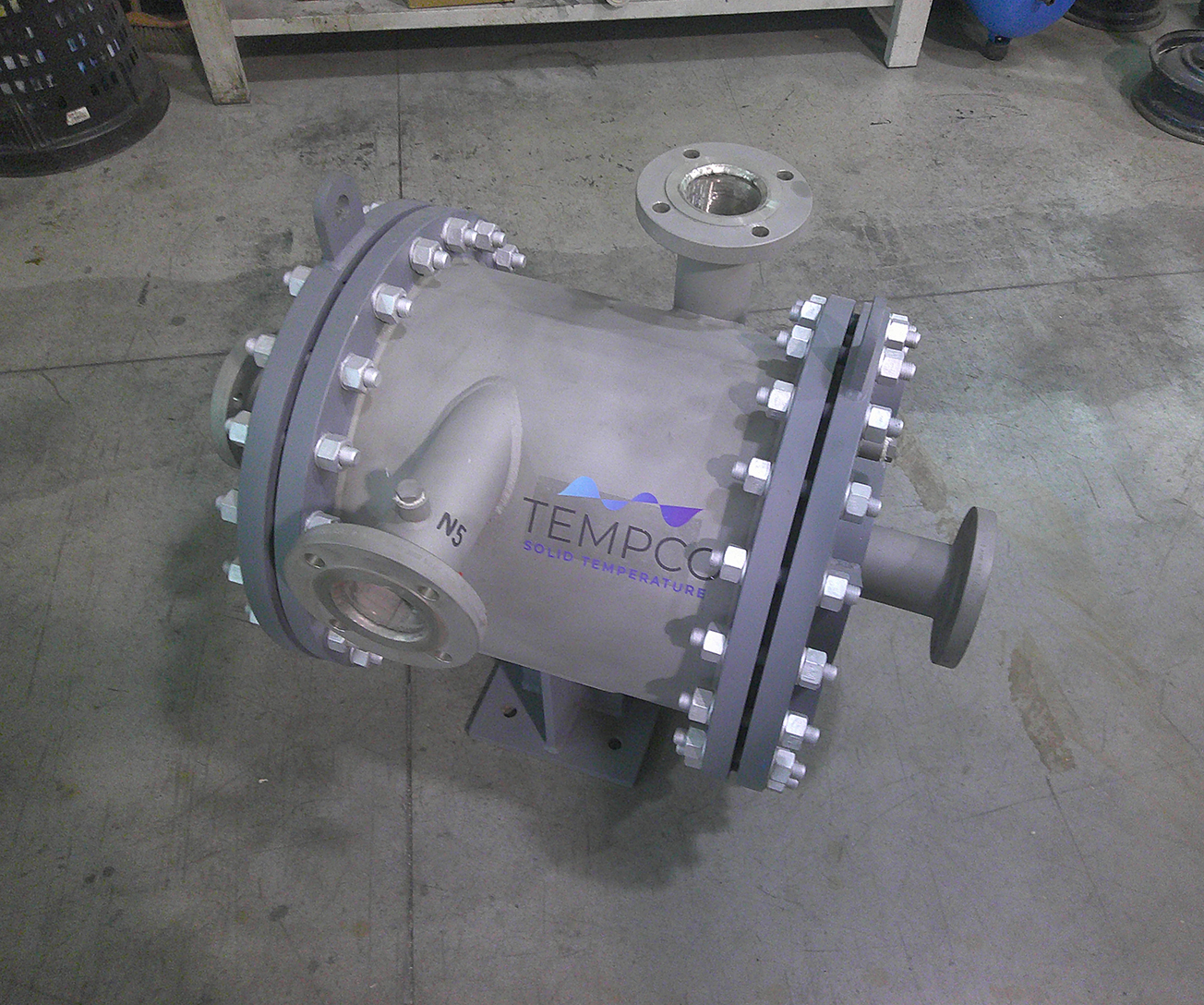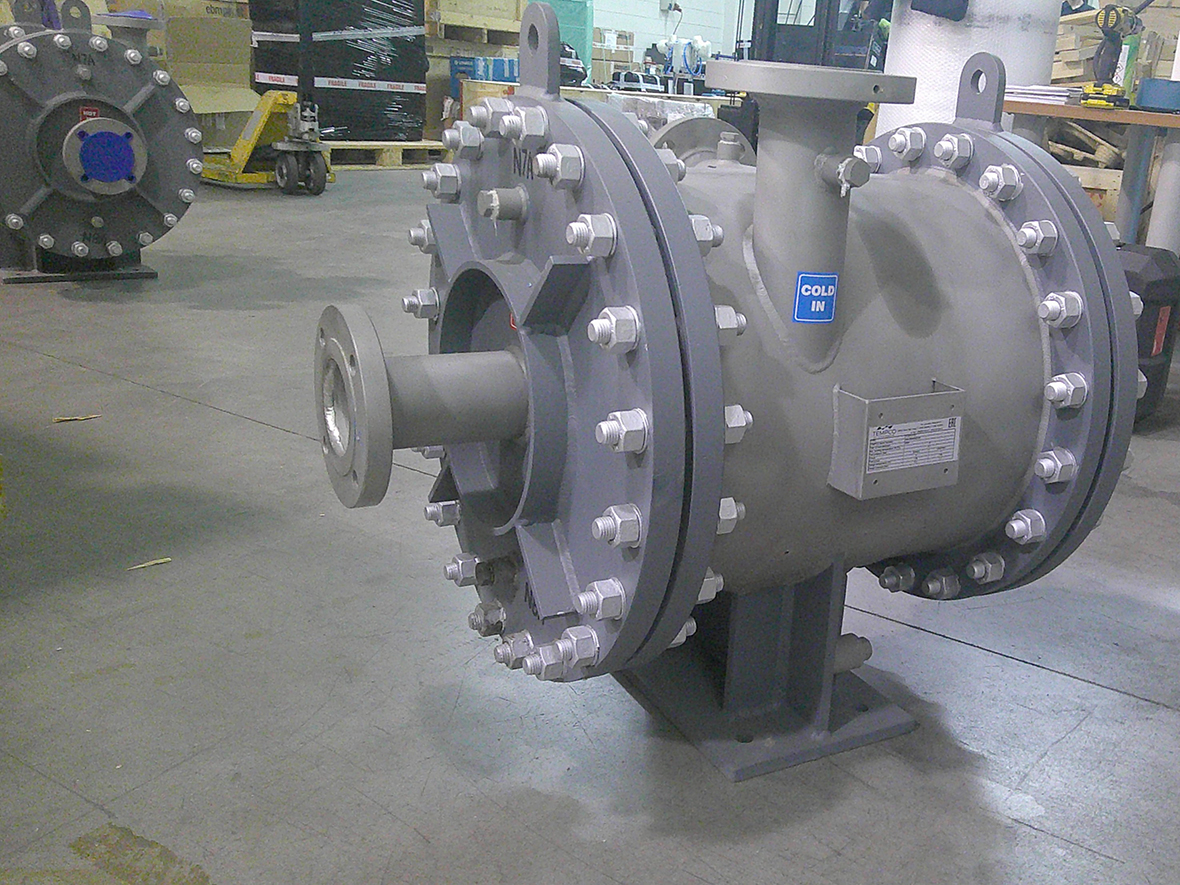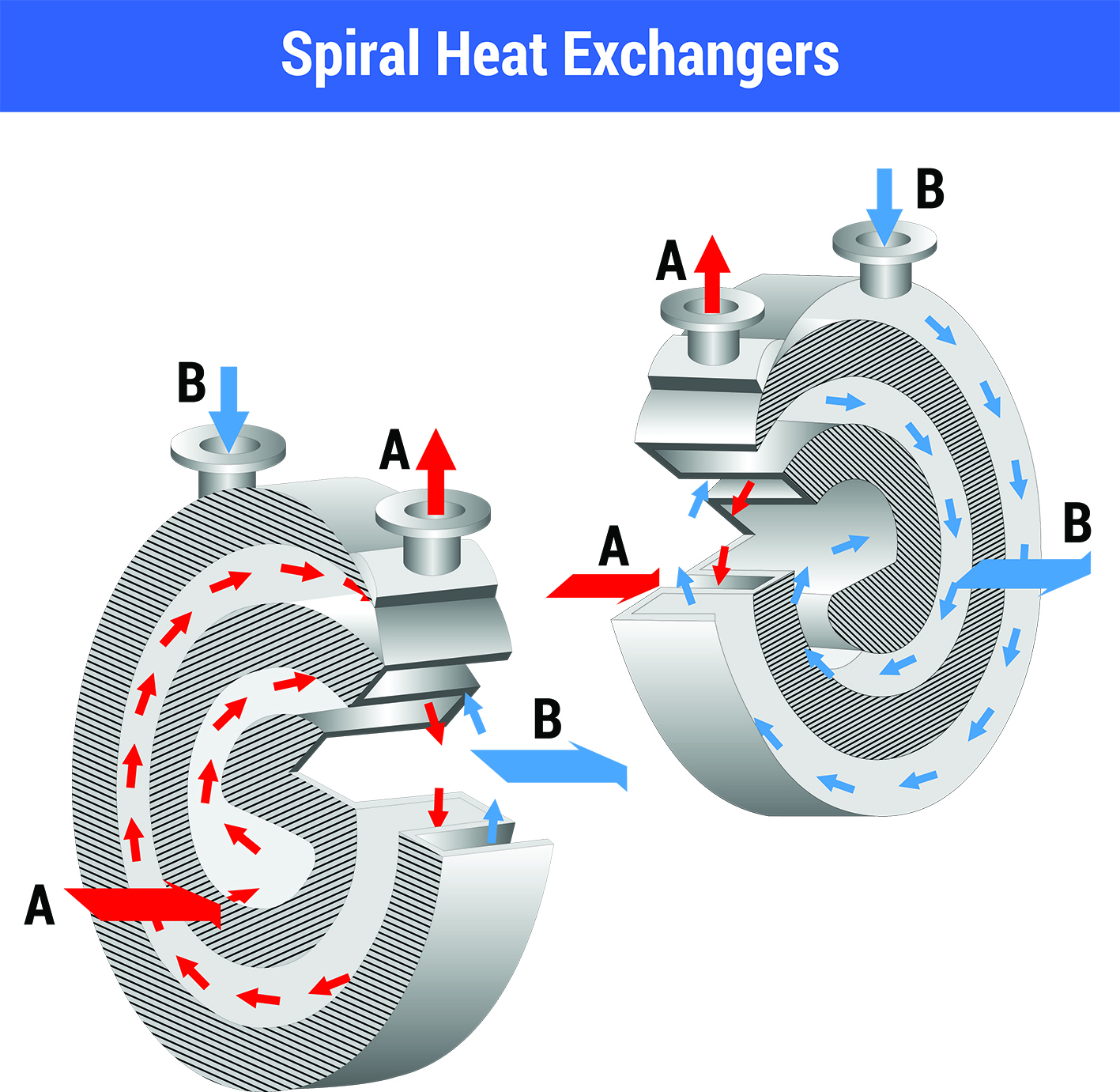An interesting type of exchangers are spiral heat exchangers, particularly appreciated in many industrial applications thanks to their unique characteristics. These exchangers are often used in applications with sludge or very dirty fluids.
Below is a summary of the main advantages and disadvantages of spiral heat exchangers.
Advantages of spiral exchangers:
1. Compactness: spiral exchangers are designed to be very compact, which allows to save space compared to other types of exchangers.
2. Self-cleaning: the continuous flow configuration and spiral geometry creates turbulence which can help reduce the build-up of dirt and scale. This makes spiral exchangers more suitable for fluids with suspended or viscous solids.
3. Heat transfer efficiency: the spiral geometry guarantees a high thermal exchange surface area compared to the overall volume, improving thermal efficiency.
4. Resistance to clogging: thanks to their configuration, spiral heat exchangers are more resistant to clogging than shell and tube exchangers or plate exchangers, especially in applications with particularly dirty fluids.
5. Ease of maintenance: maintenance is generally simpler as opening the lid of a spiral exchanger allows easy access to the internal surface, making cleaning easier.
6. Versatility: Spiral exchangers can handle a wide range of fluids, including corrosive and dirty ones, and be used in applications requiring high pressures or temperatures.

Disadvantages of spiral exchangers:
1. Initial cost: spiral exchangers may have a higher initial cost than other types of exchangers, such as plate or shell-and-tube exchangers, especially for small-scale installations.
2. Manual cleaning: while they offer good resistance to clogging, when heavier fouling occurs, cleaning requires to open the unit, which can take time and resources.
3. Pressure limits: although they resist high pressures well, spiral exchangers still have a limit, especially when compared to shell and tube exchangers, which can handle much higher pressures in some critical applications.
4. Not suitable for all fluids: in applications with extremely viscous fluids or large solid particles, there may be increased resistance to flow, reducing heat transfer efficiency.
5. Less flexible design: once built, a spiral exchanger is less flexible than modular plate exchangers, which instead allow you to add or remove plates to increase the exchange capacity.


In conclusion, spiral heat exchangers are an excellent solution in applications where compactness, efficiency and resistance to clogging are critical, but they can be more expensive and less flexible than other solutions.
